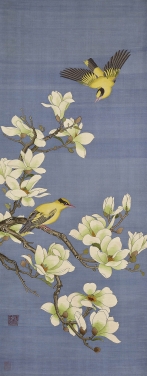Weaving a pictorial history of Chinese textiles Pictorial Silks: Chinese Textiles from the UMAG Collection
The University Museum and Art Gallery (UMAG) of the University of Hong Kong (HKU) will present Pictorial Silks: Chinese Textiles from the UMAG Collection from December 2, 2020 to March 14, 2021. Prized by Chinese and foreign merchants as an essential commodity along a vast trade network, silk served multiple roles throughout the ancient world: as fabric for garments, as a form of currency and method of tax payment, and as a medium and subject matter for professional artists and the literati class. Over the centuries, silk fabrics have remained synonymous with beauty and are entwined throughout the history of Chinese art and literature.
Beginning in the Song dynasty (960 -1279) and flourishing into the Qing (1644 -1911), craftsmen took up shuttles and needles as their brushes and silk threads as their pigments, creating exquisitely woven and embroidered pictorial and calligraphic works. In the hands of the weavers and embroiderers, weft-woven silk tapestry (kesi) and embroidery (cixiu) evolved into an art form—a fusion of painting, calligraphy and hand weaving or embroidering for aesthetic appreciation. When viewed together, the interdisciplinary nature of these vivid depictions of images and text occupy a unique and unbroken place within the history of Chinese visual culture.
Extending from the Qing dynasty to the mid-20th century, UMAG’s silk textile collection encompasses a diverse range of subjects and formats that include hanging scrolls, framed panels, banners and robes. Each artwork exemplifies the sophisticated craftsmanship of the artisans and the collective stories of the Qing dynasty’s textile industry.

